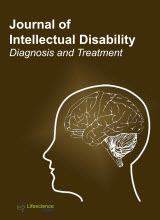jiddt
|
|
Abstract: The research paper analyzes the peculiarities of training candidates for drivers for certain subtypes (components) of combined driving. The work is focused on the analysis of opportunities to improve the quality of training of drivers for such subtypes of driving as orientation on the road, which, in particular, is the basis for mastering parking manoeuvres. Based on the analysis of a number of works, less confidence of women in driving a vehicle in a limited space (as opposed to men) is shown, which is manifested in the choice of simpler tasks for this subtype of activity. Keywords: Multicomponent combined driving, road orientation, sense of dimensions, teaching method, driving style, parking confidence, gender, visual sensations, image memory, reflection.
|
|
|
Abstract: The purpose of this study was to examine whether the activities aimed at developing creative thinking had rendered the social adaptation of adolescents with deviant behaviour smooth and evaluate the changes which had resulted from that engagement. The research data were collected through the use of project checklists, student learning outcomes analysis, interviews with teachers and parents, questionnaires. This study used SPSS and SmartPLS statistical analysis tools to analyze the above data and Textalyser application to process the focus group responses. The study found that the participation of the secondary school students with behaviour deviation in legacy projects make their social adaptation easier, improves their social skills and creative thinking style. This study confirms that there is a positive relationship between socially important creative activities, learning motivation and development of creative thinking styles. It has been found that, despite the considerable amount of research regarding the use of creative activity to develop social adaptation skills in adolescents, the problem of social adaptation of adolescents with behaviour deviation has not been sufficiently explored through engaging them in activities aimed at developing creative thinking. The process of social adaptation of adolescents with behaviour deviation is complex and the creative component is in place there, since it supplies the educational process with irreplaceable pedagogical tools that have the potential to "restart" the student’s physiological and psycho-motivational spheres. Keywords: Secondary school, teenagers with behaviour deviation, social adaptation, creative thinking, creative activity.
|
|
|
Abstract: Fragile X Syndrome (FXS) is the most common known inherited form of intellectual disability (ID), caused by a CGG repeat expansion of the FMR1 gene. The aimed of the study was to screen FMR1 mutation among the ID population followed by cascade testing in a remote area. A PCR-based method was used to screen FMR1 expanded alleles using dried blood spot cards in Flores Island, one of the very remote areas in East Indonesia. The screening included 130 males and 81 females from three schools of children with ID. The screening identified three individuals with expanded alleles including two full mutation males and one premutation male. No expanded allele was detected in females. A second blood sample for confirmatory diagnosis was done using Southern blot. Cascade testing in a remote area of Indonesia found a multigenerational family with a large number of cases with FXS. FXS screening of ID populations followed by cascade testing in positive FXS family in a remote area with challenging accessibility is recommended. Keywords: Dried blood spot testing, screening, fragile X syndrome.
|
|
|
Abstract: Japan implemented new legislation to prevent the abuse of persons with disabilities on Oct 1, 2012. Many specialists from various domains participated in the development of interventions to prevent such abuse. Here, we conducted a pilot analysis to examine the cost of such interventions and to explore differences in resources. In particular, we compared resources for the assistance of victims with intellectual disabilities with those for the assistance of victims with other disabilities. We requested the enrollment of the anonymous case records of 16 local governments. Thirteen municipal/certified centres reported 41 cases, including 42 victims. Of them, 27 victims had intellectual disabilities. We calculated both the time and human/social resources consumed per case until the resolution of the case. Although the median length of time from the start of the intervention until the solution of the claimed crisis seemed longer in cases abused by their families, an analysis of 22 familial cases did not reveal a significant relationship between the type of disability and the resource. Although the existence of intellectual disabilities did not seem to impact the resource, our method of analysis worked well. The accumulation of more cases is warranted. Keywords: Abuse, intellectual disabilities, intervention, legislation.
|
|
|
Abstract: This study aimed to compare the effectiveness of Acceptance and Commitment Therapy (ACT) and Cognitive-Behavioral Therapy (CBT) in reducing depression symptoms and increasing happiness of Iranian adolescent girls in Shiraz-Iran in 2017-2018 educational year. The research method was quasi- Experimental with assessing participants with pre -Test, Post-Test plans and control group. The Statistical population of this study consisted of 45 adolescent girl Students- between 13-17 years old - who were referred to the school’s student counselling centres because of their poor mental well being. They were selected by convenient sampling method and then they were randomly divided into three groups of 15 participants (two experimental groups and one control group). The Depression and Happiness variables were assessed by using Beck’s Depression Inventory (1996) and the Oxford Happiness Questionnaire (1989) respectively. Commitment Therapy Package was implemented for 8 sessions and Cognitive-Behavioral Package was implemented for 10 sessions for each Experimental groups separately. The Data were analysed by using SPSS24 software and analysis of multivariate covariance (MANCOVA). The results of this study suggested that both ACT and CBT Therapy approach had an acceptable effect on reducing Depression and increasing Happiness in Adolescent girls (p<0.05). However, the ACT had more influence on decreasing depression symptoms (1.56 %) and enhancing happiness (4.4. %) in participants outcomes in comparison with CBT method. Thus, it seems that ACT is a more effective intervention approach in this regard. Keywords: Acceptance-Commitment Therapy, Cognitive-Behavioral Therapy, Depression, Happiness, Adolescent Girls.
|


